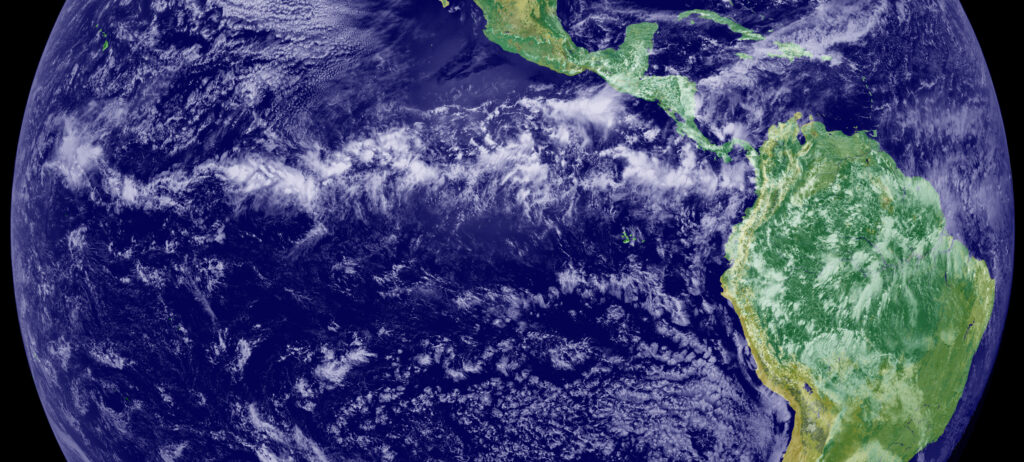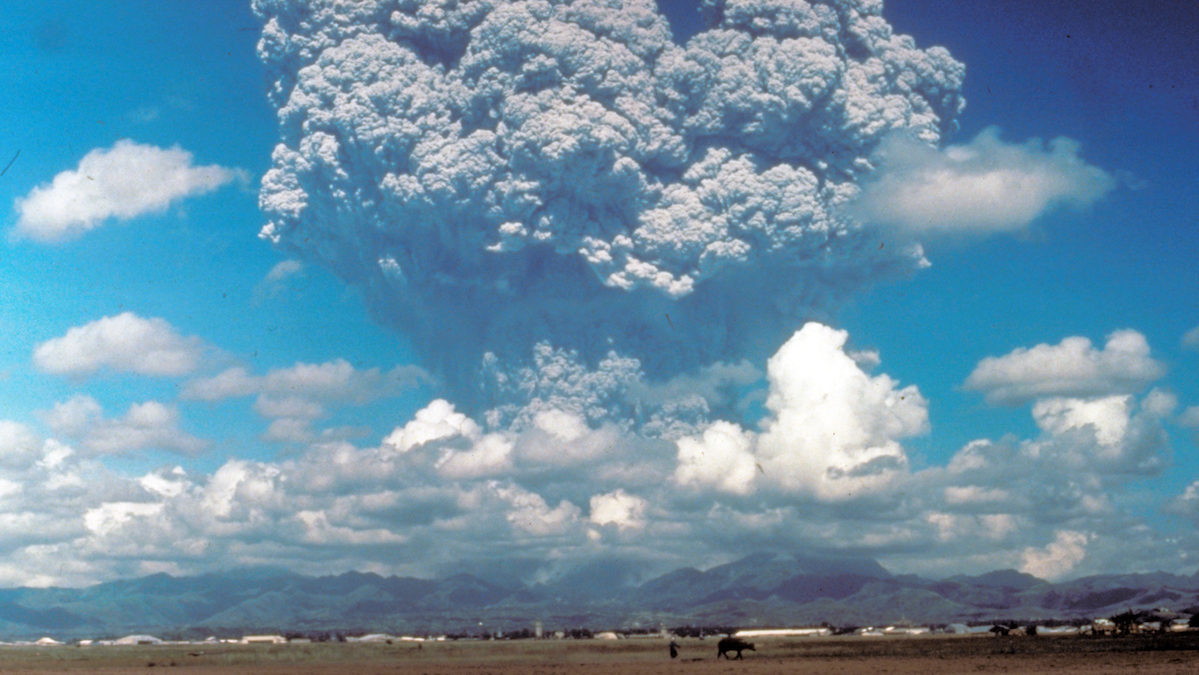Throughout Earth’s history, so-called volcanic winters have radically altered Earth’s climate. In these events, gases expelled by powerful eruptions form aerosols that reflect the Sun’s radiation and prevent it from warming the planet.
But eruptions’ effects on Earth systems don’t stop with temperature. Large eruptions can have diverse, down-the-line impacts such as altered rainfall, damaged crops, and, according to a new study, disrupted seasonal flood patterns.
The work “builds a bridge between climate modeling work on volcanic eruptions and the potential impacts on people and societies.”
“Usually, when we think about volcanoes, we think of them through the lens of changes in temperature,” said Gabriele Villarini, a hydroclimatologist at Princeton University and a coauthor of the new study. “The question I had was, ‘How about volcanoes and their impact on flooding at the global scale?’”
Villarini and his colleagues simulated the effects of three major volcanic eruptions in Earth’s past. Their results, published in Nature Geoscience, showed an asymmetric pattern: Major eruptions in the tropics of one hemisphere appeared to coincide with substantial increases in seasonal flooding in the opposite hemisphere. The findings could guide disaster response efforts and offer insight into the possible effects of geoengineering as well.
The work “builds a bridge between climate modeling work on volcanic eruptions and the potential impacts on people and societies,” said Matthew Toohey, a climate scientist at the University of Saskatchewan who was not involved in the new study.
Opposing Hemispheres
The research team used previous simulations of Earth’s climate system to obtain precipitation and temperature data for 5 years after three highly explosive eruptions: Guatemala’s Santa María in 1902, Indonesia’s Mount Agung in 1963, and the Philippines’ Mount Pinatubo in 1991. The scientists also simulated hypothetical control worlds where those eruptions never happened.
Then, the researchers used those data in a statistical model to see how flooding patterns might respond. The model reproduced streamflow conditions after the three eruptions and in the hypothetical cases where the eruptions did not occur.
When volcanic plumes were confined to one hemisphere, the scientists found, peak stream gauge readings increased in the opposite one. (Such readings have long been an indicator of seasonal flooding.)
Mount Agung’s 1963 plume stayed in the Southern Hemisphere. In the year after the eruption, about 50% of stream gauges in tropical Southern Hemisphere basins showed a decrease in peak readings when compared to the noneruption scenario, according to the model. In the Northern Hemisphere, however, about 40% of stream gauges showed an increase in peak flow in the year after the eruption.
The effects of the eruption of the Santa María volcano in 1902 showed a similar pattern: In the 2 years after the eruption, simulated stream gauges in the Northern Hemisphere (where the aerosols were concentrated) had decreased flows, while those in the Southern Hemisphere experienced an abrupt increase.
The eruption plume from Mount Pinatubo, however, was more evenly distributed across the Northern and Southern Hemispheres, and its effects were distinct. The team’s simulations showed that in the 3 years after the eruption, Pinatubo’s plume decreased flooding in tropical regions but increased stream gauge readings in arid areas of each hemisphere.
Eruptions on the Equator
The research team didn’t directly identify the underlying reasons for their results, but Villarini said it’s likely the volcanic emissions and flood patterns are linked via the Intertropical Convergence Zone (ITCZ), a band of strengthened precipitation where Earth’s trade winds meet.

Gases from volcanic eruptions, especially sulfur dioxide, oxidize to form tiny particles that scatter sunlight, cooling Earth’s surface and creating a temperature differential that pushes the ITCZ away from the hemisphere containing the plume. This shift in the ITCZ likely pushes moisture-laden air into the opposite hemisphere, contributing to increased flooding, Villarini said.
“If we can make useful predictions about changes in rainfall and changes in streamflow, that can have a real-world impact.”
Toohey said the results are a step toward being able to predict the potential for unusual flooding or drought across broad areas after a volcanic eruption. “It’s important that we keep working in order to understand these processes better, to be able to make better predictions on a finer scale,” he said.
“If we can make useful predictions about changes in rainfall and changes in streamflow, that can have a real-world impact,” Toohey said.
Villarini said understanding the long-term, secondary impacts of volcanic eruptions also has implications for potential geoengineering efforts. Volcanic eruptions scatter aerosols in much the same way as efforts to cool Earth’s atmosphere via aerosols would. Possible changes to flood patterns would need to be considered by any aerosol engineering efforts, he said.
—Grace van Deelen (@gvd.bsky.social), Staff Writer

